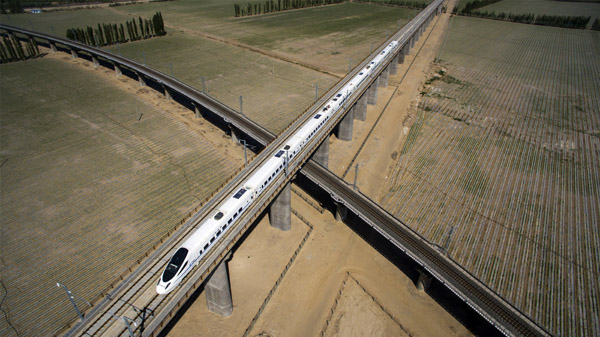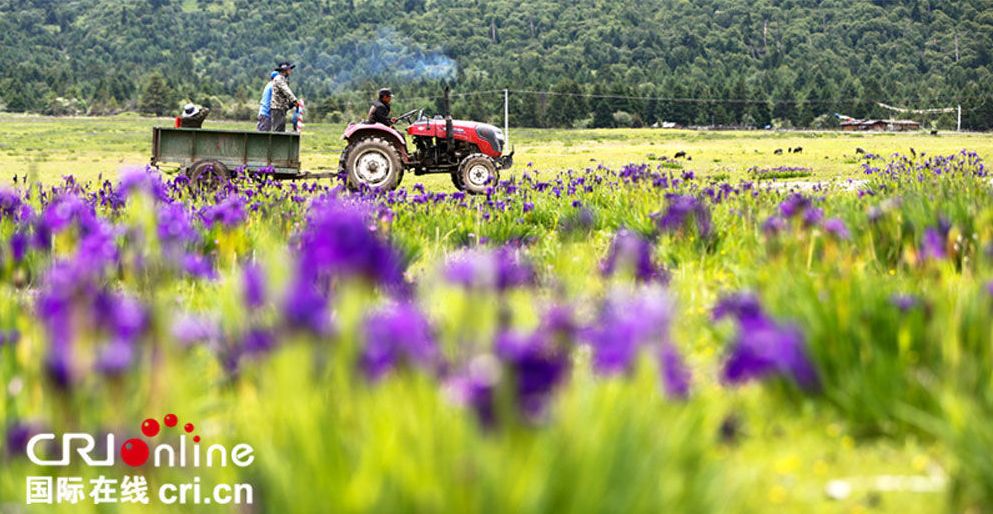Barley provides health, chance to grow an industry
Highland barley farming is expected to become an important way for farmers in the Tibet autonomous region to get rich, as the industry has been extended to include deep processing and more related sectors, local agricultural officials and experts say.
The region's agricultural research institutions have developed more than 60 finished products based on highland barley, the local agricultural administration said.
More than 30 companies in Tibet are engaged in processing highland barley, with a designed capacity of about 110,000 metric tons. About 60,000 tons of highland barley was processed into various finished products last year, the Tibet Agriculture Bureau said.
Highland barley, known as qingke among locals, has been the most important crop and the staple food ingredient in Tibet for thousands of years.
Output increased from 621,800 tons in 2011 to 746,700 tons last year, according to official figures. Local officials and experts predict output will reach 800,000 tons in 2020, with the planting area expected to surpass 133,000 hectares.
Highland barley is traditionally used to make zanba, or roasted barley flour, or wine. Because of its rich protein, fiber and vitamin content and low fat and sugar content, highland barley can be used to make many more healthy food and beverage products.
The Tibet Bureau of Science and Technology has offered strong support for the industrialization of highland barley. It spent nearly 10 million yuan ($1.5 million) in developing highland barley-based products last year.
The bureau partnered with more than 20 research and educational institutions in Tibet and the rest of the country, including the Chinese Academy of Agricultural Sciences, China Agricultural University and the Chinese Academy of Sciences, developing more than 40 barley-based products last year.
Nyima Tsering, president of the Tibet Academy of Agricultural Sciences, said the autonomous region will focus its efforts on upgrading existing enterprises in the farming product processing sector using modern technologies.
These companies will be encouraged to develop multifunctional and high value-added products based on highland barley to meet demand, Nyima Tsering said.
Traditional highland barley producing regions such as Xigaze, Qamdo, Lhasa and Shannan will be the major regions for barley deep processing, he said.
"By implementing supply-side reforms and promoting the use of advanced farming and processing technologies, the highland barley-related industries are expected to bring in 50 billion yuan worth of revenue for Tibet a year," Nyima Tsering said.
Your Comment
Name E-mailRelated News
-
;
-
-

-
China Focus: Extending highways lead Tibet's growth onto fast trac
Highways are blood vessels for the region, and Tibet has seen its economy invigorated by improved transport conditions in the past five years.
-
-
-

-
Tibet issues first batch of social security card
A ceremony of the issue of the first batch of social security card and the launch of the trans-provincial medical treatment settlement system was held in Nyingchi, southwest China's Tibet on the morning of August 17, 2017.
-
-
-

-
Blue-sky thinking drives Tibet's organic industries
"We are well aware of the importance of environmental protection. There is a price for all products, but a clean environment is priceless."
-
Based in Lhasa, Tibet Vista is a Tibet travel agency that specialized in Tibet permit, and Tibet tours for both private and group travelers at a local price!
•4 Days Lhasa City Group Tour from USD 460 •8 Days Everest Base Camp Group Tour from USD 850 •15 Days Mt.Kailash Group Tour from USD 1780 •2016 Tibet Train Tours from Beijing, Shanghai, Chengdu, Xining,etc










